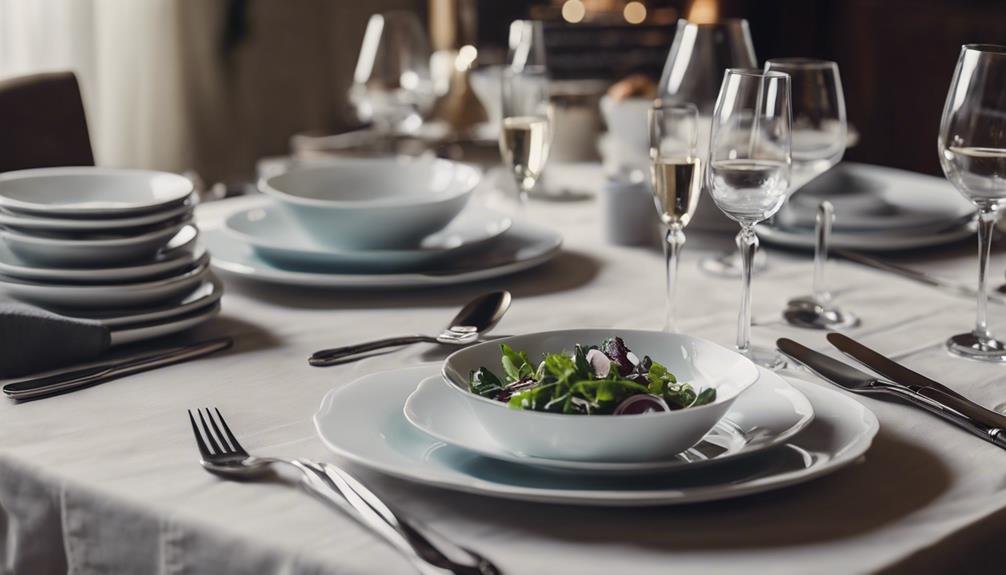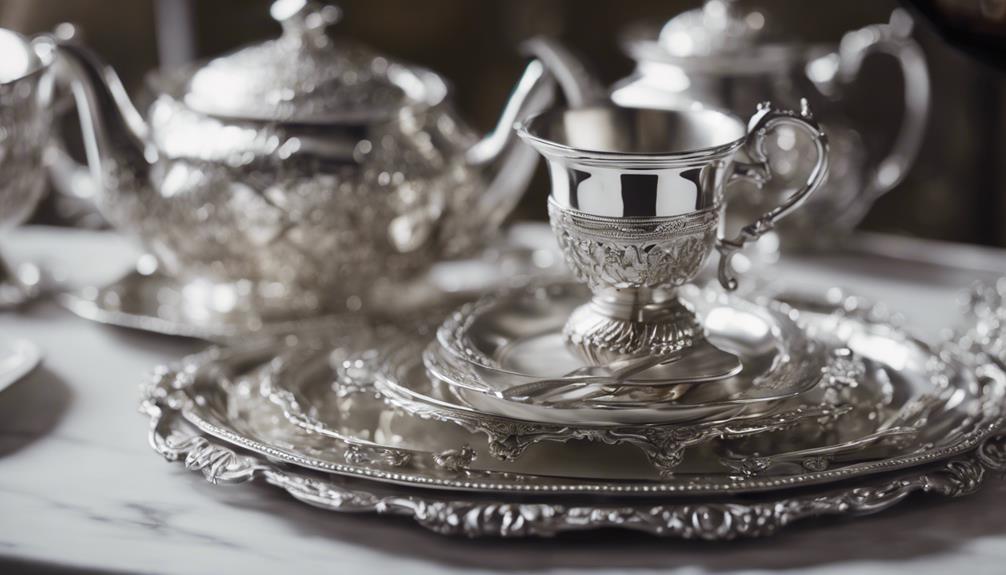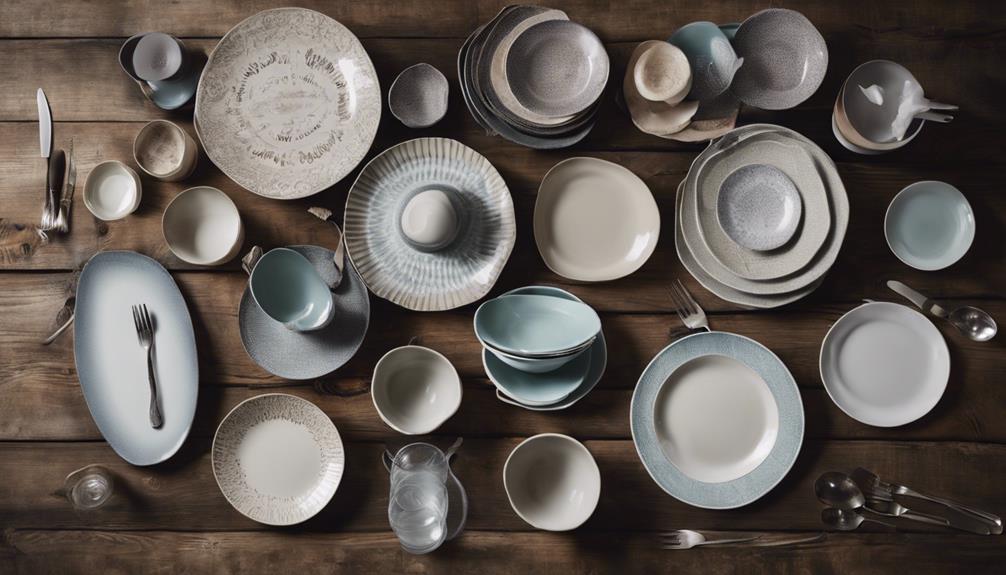Plastic tableware provides a variety of practical and cost-effective serving options, which are highly favored in households and the food service industry for their versatility. Different materials such as polypropylene and melamine offer unique features to cater to various needs. Known for their easy upkeep and long-lasting nature, they are ideal for daily use and outdoor gatherings. The ease of quick cleaning, wide array of designs, and affordability make them a popular choice for many. Concerns regarding their environmental impact have sparked the development of biodegradable alternatives and regulatory actions in certain countries. The adoption of environmentally friendly practices and partnerships strive to encourage sustainable choices. Further details on the advantages and future prospects are available.
Key Takeaways
- Plastic tableware is a convenient option for serving food, available in various styles and colors.
- Types include polypropylene, polystyrene, and melamine, each with unique qualities.
- It is durable, resistant to breakage, and easy to clean, suitable for everyday use.
- Plastic tableware contributes to plastic pollution due to low recycling rates and non-biodegradable materials.
- Innovations and regulations aim to promote sustainability, with a growing trend towards eco-friendly and biodegradable options.
Definition of Plastic Tableware
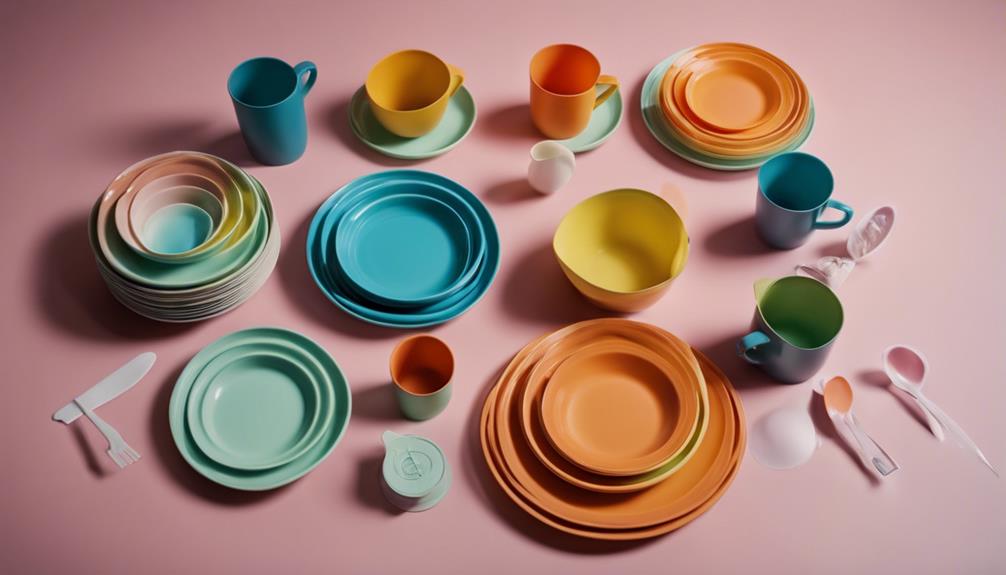
Plastic tableware, commonly found in fast-food restaurants and households, is a convenient and cost-effective option for serving food and beverages. Disposable plastic tableware, such as dishes, cups, and utensils, offers the advantage of eliminating the need for washing and storage, making it ideal for on-the-go use. This type of tableware comes in a variety of styles, colors, and designs, catering to different dining settings and themes.
The versatility of plastic tableware makes it a popular choice for various occasions, from casual gatherings to formal events. Its hygienic and safe nature guarantees that food and drinks are served in a clean and secure manner. Whether you need simple, plain white plates for a quick meal or vibrant, themed cups for a party, plastic tableware provides options to suit your needs. The practicality and affordability of disposable plastic tableware have made it a staple in the food service industry and everyday households alike.
Types of Plastic Tableware
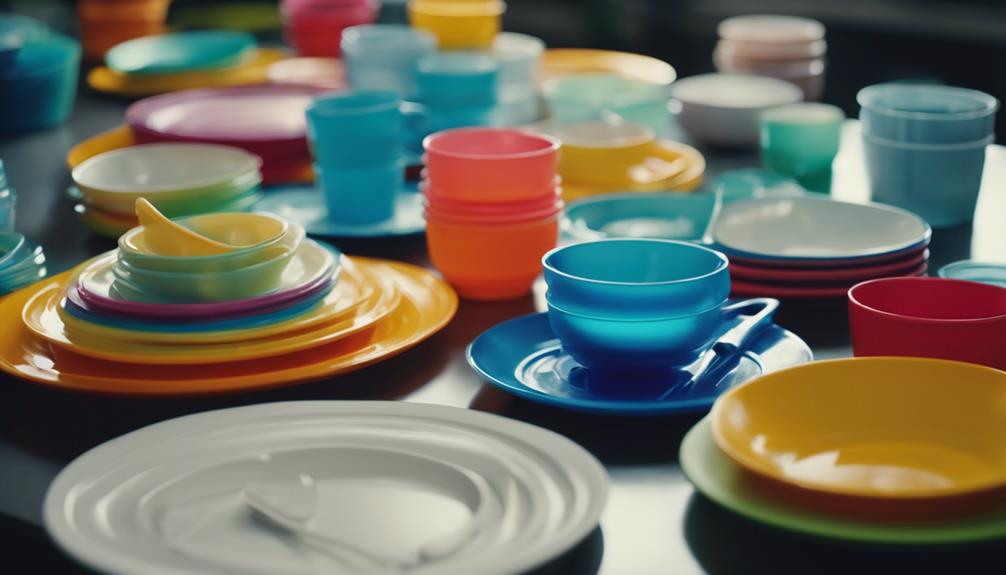
When considering types of plastic tableware, you'll encounter various material options like melamine, polypropylene, polystyrene, and polyethylene.
Each type comes with its own set of characteristics, including considerations about environmental impact, durability, and maintenance.
Understanding these differences can help you choose the best plastic tableware for your needs and preferences.
Material Options Available
Among the material options available for plastic tableware, polypropylene, polystyrene, and melamine stand out for their distinct qualities and suitability for various dining needs.
Polypropylene is favored for its durability and microwave-safe properties, making it ideal for dishes that need to withstand heat.
Polystyrene, on the other hand, is lightweight and cost-effective, commonly used in disposable utensils and cups due to its convenience.
Melamine is known for its scratch and break resistance, making it perfect for reusable dinnerware that needs to endure frequent use.
Each type of plastic brings specific benefits catering to different preferences, from durability and heat resistance to affordability and longevity.
Environmental Impact Considerations
Have you considered the environmental repercussions of the materials used in plastic tableware?
Plastic tableware, including items like plates and utensils made from polystyrene and polypropylene, poses significant environmental impacts due to low recycling rates and the use of non-biodegradable materials.
To combat this, biodegradable alternatives such as sugarcane and bamboo-based plastics have been introduced to mitigate environmental harm.
However, there are ongoing concerns about the effectiveness of biodegradable plastics breaking down in landfills.
The choice of plastic tableware directly contributes to plastic pollution in oceans and landfills, emphasizing the need for a shift towards more sustainable options that are environmentally friendly and reduce the overall ecological footprint.
Durability and Maintenance
Plastic tableware stands out for its durability, making it a practical choice for everyday use and various events. Whether it's melamine or polypropylene, these types of plastic tableware are resistant to breakage and scratches, ensuring they last a long time.
Melamine plastic tableware, in particular, is a cost-effective option for households due to its long-lasting properties. When it comes to maintenance, plastic tableware is a breeze to clean as it's dishwasher safe, saving you time and effort. This easy upkeep also reduces the need for manual washing.
The durability of plastic tableware makes it a perfect choice for outdoor use, picnics, and events where traditional tableware may not be as suitable.
Common Uses of Plastic Tableware
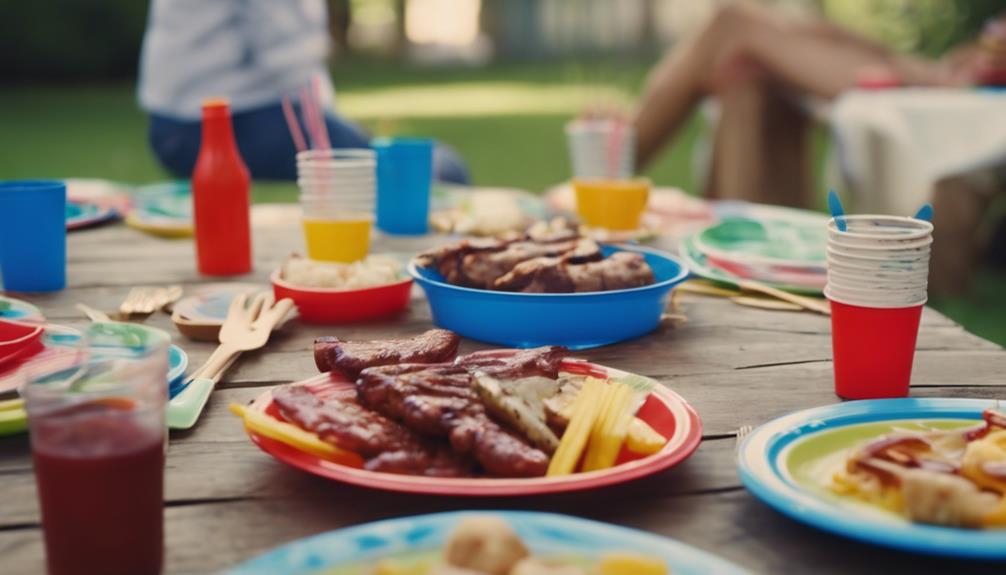
Ideal for various occasions and settings, plastic tableware serves as a convenient and practical choice for hosting events or dining outdoors. Fast food restaurants often rely on plastic tableware like spoons, plates, and cups for their ease of use and cost-effectiveness. The availability of plastic tableware in solid colors makes it versatile for different themes and events.
Whether you're grabbing a quick meal on the go or organizing a casual outdoor gathering, plastic tableware offers a hassle-free solution. Its disposable nature eliminates the need for washing up, saving you time and effort. Additionally, the durability of plastic tableware reduces the risk of breakage compared to traditional dishes, making it ideal for busy environments like fast food establishments.
Next time you're planning a picnic or hosting a party, consider using plastic tableware for its convenience and practicality. With a wide variety of designs to choose from, you can easily find the perfect plastic tableware to suit your event's style and needs.
Benefits of Plastic Tableware
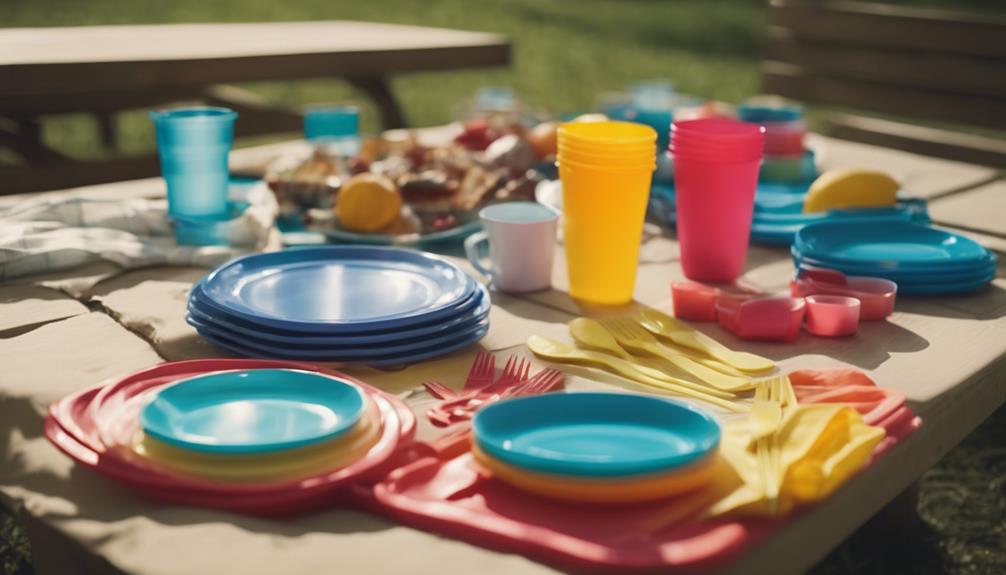
Considering the practicality and convenience of plastic tableware, its benefits extend beyond just saving time and effort during cleanup after events. Here are four key advantages of using disposable plastic tableware:
- Convenience: With plastic tableware, you can simply enjoy your meal and then toss everything in the trash, eliminating the need for washing dishes or worrying about storage.
- Variety: Plastic tableware comes in a wide array of designs and styles, allowing you to choose options that match the theme or ambiance of your event perfectly.
- Durability: Unlike traditional dishes that can easily break or get lost, plastic tableware is durable and less prone to damage, making it ideal for busy gatherings.
- Cost-Effective: Using disposable plastic tableware can be a cost-effective alternative, especially for large events, as it saves you money on purchasing, cleaning, and replacing traditional dishes.
Environmental Impact of Plastic Tableware

When hosting events or gatherings, the importance of your choice in tableware on the environment is an important consideration to keep in mind. Plastic tableware, with its high demand and widespread use, contributes significantly to plastic pollution in oceans and landfills.
Recycling plastic tableware poses a challenge due to its small size, inconsistent materials, and shape, making it difficult for recycling facilities to process effectively. To combat this issue, biodegradable alternatives such as sugarcane and bamboo are being introduced to reduce the environmental impact of plastic tableware.
In fact, France is taking a bold step by planning to ban plastic cutlery, plates, and cups in 2020 to promote sustainable alternatives and reduce plastic waste. Organizations like the Plastic Pollution Coalition and 5 Gyres are actively advocating for a reduction in plastic pollution and raising awareness about the environmental impact of plastic tableware.
Maintenance Tips for Plastic Tableware

To maintain the cleanliness and hygiene of your plastic tableware, wash it with mild soap and water regularly. Here are some tips to keep your plastic tableware in top condition:
- Use Mild Soap and Water: Regularly wash your plastic tableware with mild soap and water to remove food residues and prevent bacterial growth.
- Avoid Abrasive Cleaners: Refrain from using abrasive cleaners or scrubbers that can scratch the surface of your plastic tableware, leading to a dull appearance.
- Proper Storage: Store your plastic tableware in a cool, dry place to prevent warping or discoloration over time.
- Check for Wear and Tear: Regularly inspect your plastic tableware for any signs of wear or damage, such as cracks or melting. Replace damaged items promptly to avoid any potential health hazards.
Alternatives to Plastic Tableware
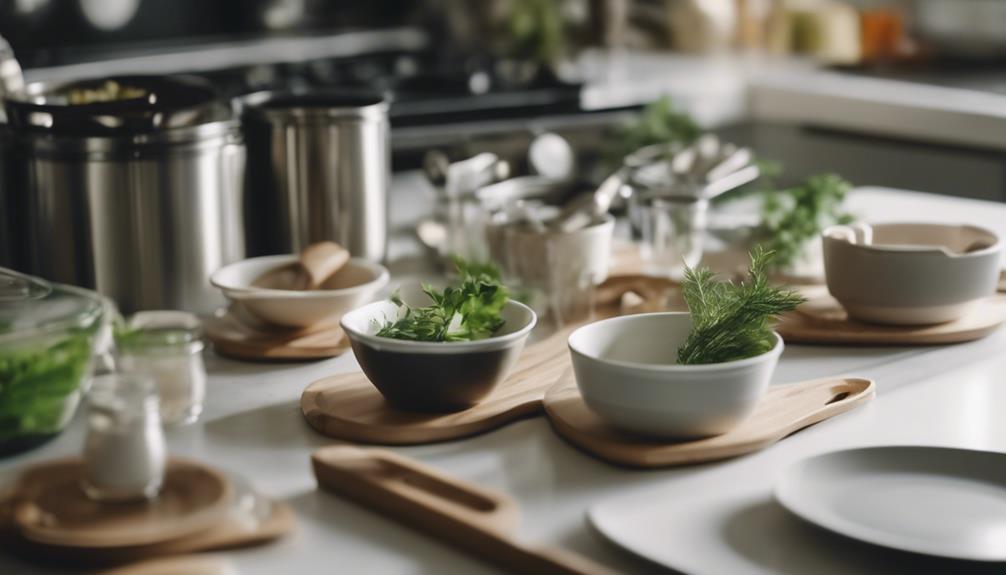
Maintaining the cleanliness and hygiene of your plastic tableware through regular washing is essential. However, if you're looking for more sustainable options, there are several alternatives to plastic tableware available. Biodegradable options made from materials like sugarcane and bamboo offer a planet-friendly choice. Some companies also provide compostable tableware that naturally breaks down, minimizing environmental impact.
For those seeking reusable alternatives, tableware made from materials like stainless steel or glass can be an excellent sustainable option compared to single-use plastic. Additionally, eco-friendly tableware crafted from recycled materials not only helps reduce waste but also promotes sustainability. If you're looking for innovative choices, edible tableware made from materials such as rice, wheat, or seaweed presents unique and environmentally friendly options.
Consider these alternatives to plastic tableware to make a positive impact on the environment while still enjoying your meals.
Regulations on Plastic Tableware
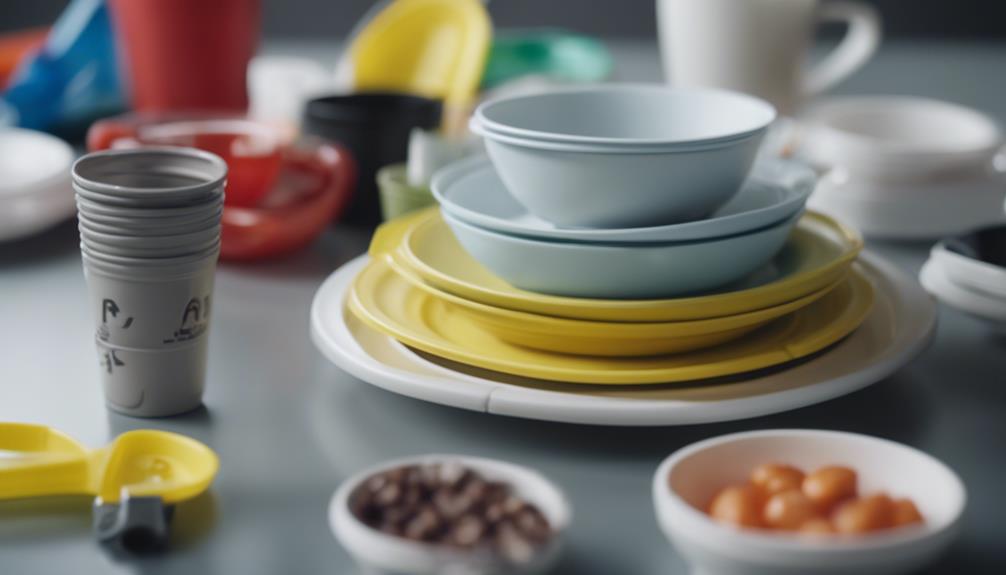
Efforts to regulate the use of plastic tableware are gaining traction globally as countries like France move towards implementing bans on disposable plastic cutlery, plates, and cups. This shift towards more sustainable practices is pivotal in combating the environmental impact of plastic waste.
Here are some key points regarding regulations on plastic tableware:
- France leading the way: France is set to implement a ban on plastic cutlery, plates, and cups in 2020, demonstrating a proactive approach to reducing plastic pollution.
- Global momentum: The movement towards sustainable alternatives to plastic tableware is gaining momentum worldwide, indicating a growing awareness of the need for eco-friendly solutions.
- Advocacy for change: Organizations like the Plastic Pollution Coalition and 5 Gyres are actively advocating for regulations and raising awareness about the detrimental effects of plastic waste on the environment.
- Enforcement measures: The Ministry of Ecological and Solidarity Transition in France is taking a lead role in enforcing the ban on plastic tableware, signaling a commitment to implementing and upholding regulatory measures.
Future Trends in Plastic Tableware
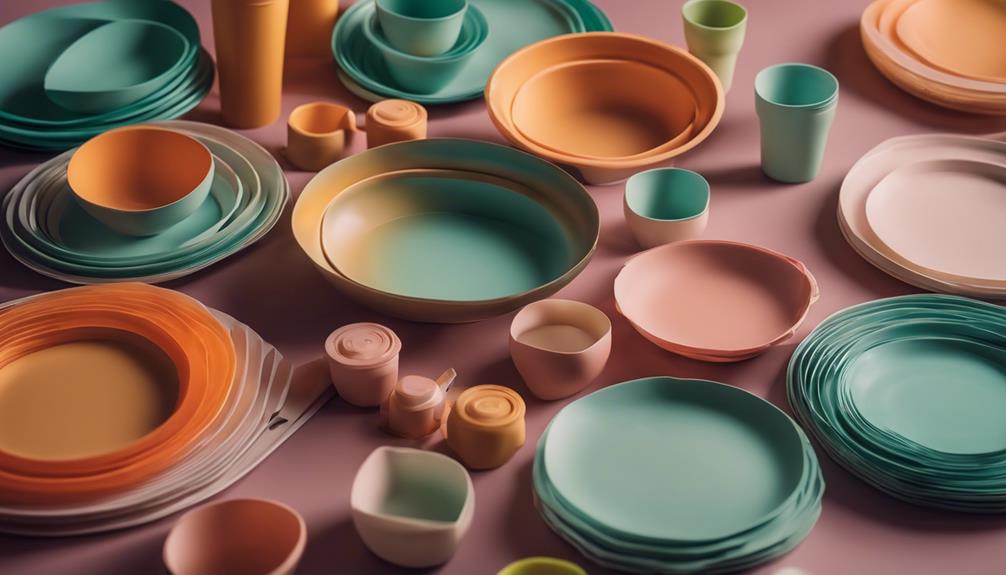
Future innovations in plastic tableware are driving towards sustainability through the adoption of biodegradable materials and plant-based alternatives. Manufacturers are actively exploring new designs and technologies to make plastic tableware more eco-friendly and recyclable.
The shift towards sustainable materials is a response to the growing concern over plastic pollution, leading to an increased demand for reusable and compostable options in the market. Collaborations between industry leaders and environmental organizations are playing an essential role in promoting the development of greener plastic tableware solutions.
Consumer preferences for environmentally conscious products are reshaping the future landscape of plastic tableware, emphasizing sustainability and reduced environmental impact. As awareness grows, the industry is expected to continue evolving towards more sustainable practices, offering consumers a wider range of eco-friendly options to choose from for their dining needs.
Frequently Asked Questions
Is Plastic Tableware Safe?
Plastic tableware can be safe for single-use, but things get tricky with hot foods or liquids. Heat can make chemicals leach into your meal, like BPA, which has some health concerns. Choosing BPA-free options lowers this risk.
Just stick to the manufacturer's guidelines for your plastic tableware to play it safe.
What Are the Advantages of Plastic Tableware?
Plastic tableware brings convenience through easy cleanup and disposal post-events. It reduces breakage risks and offers various designs to suit any occasion.
Additionally, its cost-effectiveness makes it a practical choice for budget-conscious hosts.
What Are Plastic Plates Made Of?
Plastic plates are commonly made of durable melamine, a thermosetting plastic that can handle high temperatures. Polypropylene and other blends are also used for microwave-safe options.
Lightweight and easy to clean, plastic plates come in various colors and designs. They're cost-effective and convenient for events or daily use.
These qualities make plastic plates a practical choice for serving food.
What Is Plastic Silverware Made Of?
Plastic silverware is typically made from polystyrene, known for durability and affordability. Polystyrene, a thermoplastic polymer from styrene monomers, is easily molded into utensils. Despite being recyclable, low rates persist due to contamination and infrastructure issues.
Its lightweight design makes it convenient for events and picnics. Some brands offer biodegradable options using plant-based materials like cornstarch.
Can Vintage Tableware be Considered as a Type of Plastic Tableware?
Vintage tableware options are not made from plastic. They are often crafted from materials such as porcelain, ceramic, or glass. While plastic tableware may have a vintage look, true vintage tableware is typically considered to be made from non-plastic materials that were popular in past decades.
Conclusion
To sum up, plastic tableware is a convenient and versatile option for various dining needs. Just like a reliable friend who always has your back, plastic tableware is there to make your meals easier and more enjoyable.
With its durability, affordability, and ease of use, it's no wonder why plastic tableware remains a popular choice for many households. Remember to handle and dispose of plastic tableware responsibly to minimize environmental impact.



